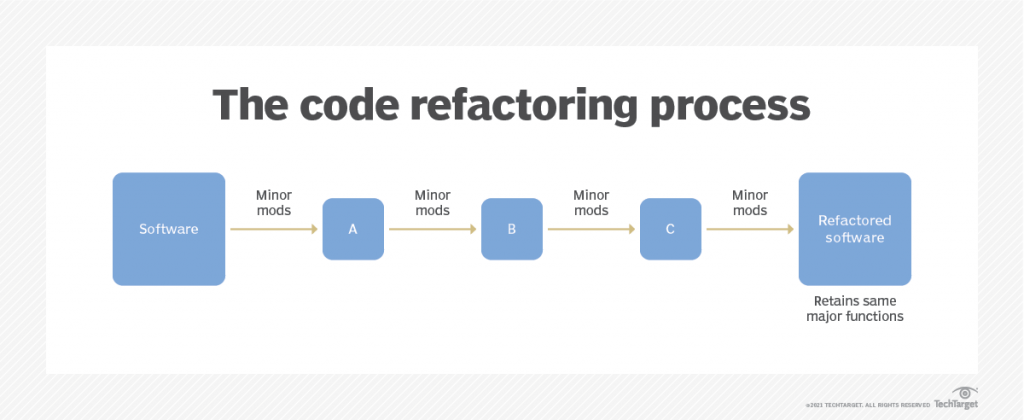To succeed in today’s fast-paced tech world, developers need to build programs that are resilient, easy to use, and ready for whatever changes might come down the road.
In this article, we’re going to lay out smart strategies for building robust software.
We’ll look at how making things simple for users can make a big difference, why it’s smart to clean up and organize code, and how new tech like serverless computing can give developers a big advantage.
Each part plays a big role in making sure the final software is top-notch.

Understanding Software Development Basics
Building a robust software is more than just about coding; it involves a series of processes including planning, designing, testing, and maintenance.
You start by identifying the problem you want to solve or the goal you wish to achieve. Once that’s set, you move into designing, where you’ll decide how your software will look and function. Then, you dive into the actual coding.
You also have to test your software, fix any issues, and then test again. Finally, even after your software is live, you’re not done. You must maintain it, ensuring it stays useful and relevant.
Prioritizing User Experience in Design
It helps to keep in mind that you’re creating software for real people, not just for the sake of technology. Prioritize the needs of your users above all else.
Make it intuitive, easy to navigate, and responsive. The more positive the user experience, the higher the chance your software will be a success.
Think about the user journey. What actions will they take? What problems might they encounter? How can you make their experience smoother? Don’t forget the needs of user groups that can be leveraged for CSR marketing.
Ask these questions early in the design process, and keep asking them as you develop. Don’t lose sight of the end user. After all, they’re the ones who’ll be using your software.
Choosing the Right Tools and Technologies
To select the appropriate tools and technologies for your software development project, you need to consider your project’s scope, complexity, and unique requirements first.
Look at the skills and expertise of your team. Some tools may have a steep learning curve, so ensure your team is equipped to handle them.
Don’t neglect cost and support. For example, while Node js development services is an open-source environment, which makes it a cost-effective choice, take a moment to ponder if the level of professional support available meets your project’s demands.
Additionally, some high-end tools may not be affordable or may come with expensive licenses.
Lastly, consider the tool’s reliability and scalability. As your project grows, your tools should be able to keep up. Choose wisely; your project’s success depends on it.
Simplifying Software Complexity
To effectively simplify software complexity, you should regularly assess and streamline your codebase. Getting lost in code increases complexity, so it’s important to divide functionalities into small, labeled boxes.
Changing methods for new functionality adds unnecessary complexity, and complex designs create problems in architecture. By handling functionalities in small chunks, you ensure quick delivery and maintainable logic.
Additionally, dividing your software into small boxes and labeling them allows for efficient searching. Small behavior-preserving transformations have a cumulative effect, so focus on improvement rather than rewriting business logic.
The Art of Efficient Refactoring
Refactoring is a controlled technique for improving existing code. It involves making small behavior-preserving transformations that have a cumulative effect.
The focus of refactoring should be on improvement, rather than rewriting business logic. By keeping it simple and reducing complexity during refactoring, you can have more control over your codebase.
Efficient refactoring goes hand in hand with thinking small and reducing complexity. It allows you to handle functionalities in small chunks, ensuring quick delivery and maintainable logic.
Dividing your software into small, labeled boxes also enables efficient searching, making it easier to find and understand specific parts of your code.
Unit Testing: An Essential Approach
Unit testing is a crucial step in effective software development. It helps ensure the quality and reliability of your code by simulating expected input and output scenarios. Here are three reasons why unit testing is an essential approach:
1. Catching bugs early
Unit tests allow you to identify and fix issues early on, preventing them from becoming more complex and costly to resolve later.
2. Facilitating refactoring
By keeping your unit tests small and independent, they can serve as a safety net when refactoring code. If all tests pass after a refactoring, you can be confident that your changes haven’t broken any existing functionality.
3. Improving code design
Writing unit tests forces you to think about the structure and dependencies of your code, leading to more modular and loosely-coupled designs.
The Value of Collaborative Review
Collaborative review is an essential practice that provides valuable feedback and helps identify potential issues or areas for improvement in your code.
Involving others in the review process allows you to benefit from their diverse perspectives and expertise, leading to a more comprehensive evaluation of your software.
Collaborative review also encourages knowledge sharing and fosters a culture of continuous learning within your development team. It allows for the identification and correction of errors, enhances code readability, and promotes adherence to coding standards.
Moreover, collaborative review helps to reduce the likelihood of bugs and issues in your software, ultimately leading to a more reliable and robust final product.
Serverless Computing: A New Era
Serverless computing, also known as Function as a Service (FaaS), is a paradigm that allows developers to run their code without the need for managing servers. It offers several benefits, including:
- automatic scaling
- reduced operational costs
- increased development speed
With serverless computing, you can focus on writing code and let the platform handle the infrastructure. Platforms like AWS Lambda, Microsoft Azure Functions, and Google Cloud Functions provide serverless capabilities and support various programming languages.
Importance of Continuous Integration
When building robust software, one critical component you can’t overlook is continuous integration. This process, which involves merging all developer working copies to a shared mainline several times a day, offers unprecedented benefits.
Here are four key reasons why continuous integration is paramount:
- Early Bug Detection: Regular integration helps you spot and fix bugs early, avoiding last-minute chaos.
- Reduced Risk: It helps mitigate risks associated with long-term branches and massive merges.
- Efficient Development Cycles: You’ll enjoy improved team communication and faster software delivery cycles.
- Quality Assurance: It ensures that your software works perfectly in different environments before deployment.
Conclusion: Emphasizing on Regular Updates and Maintenance
Regular updates can add new features, improve performance, and enhance security, ensuring your software remains relevant and effective.
Also, remember that maintenance involves more than just fixing things when they break. It’s about preventive measures to keep your software running smoothly.
Regularly inspect your code, optimize it, and ensure it’s clean and efficient. In other words, don’t just react to problems; anticipate them.
With regular updates and diligent maintenance, you can build and maintain robust software.
























Leave a comment!